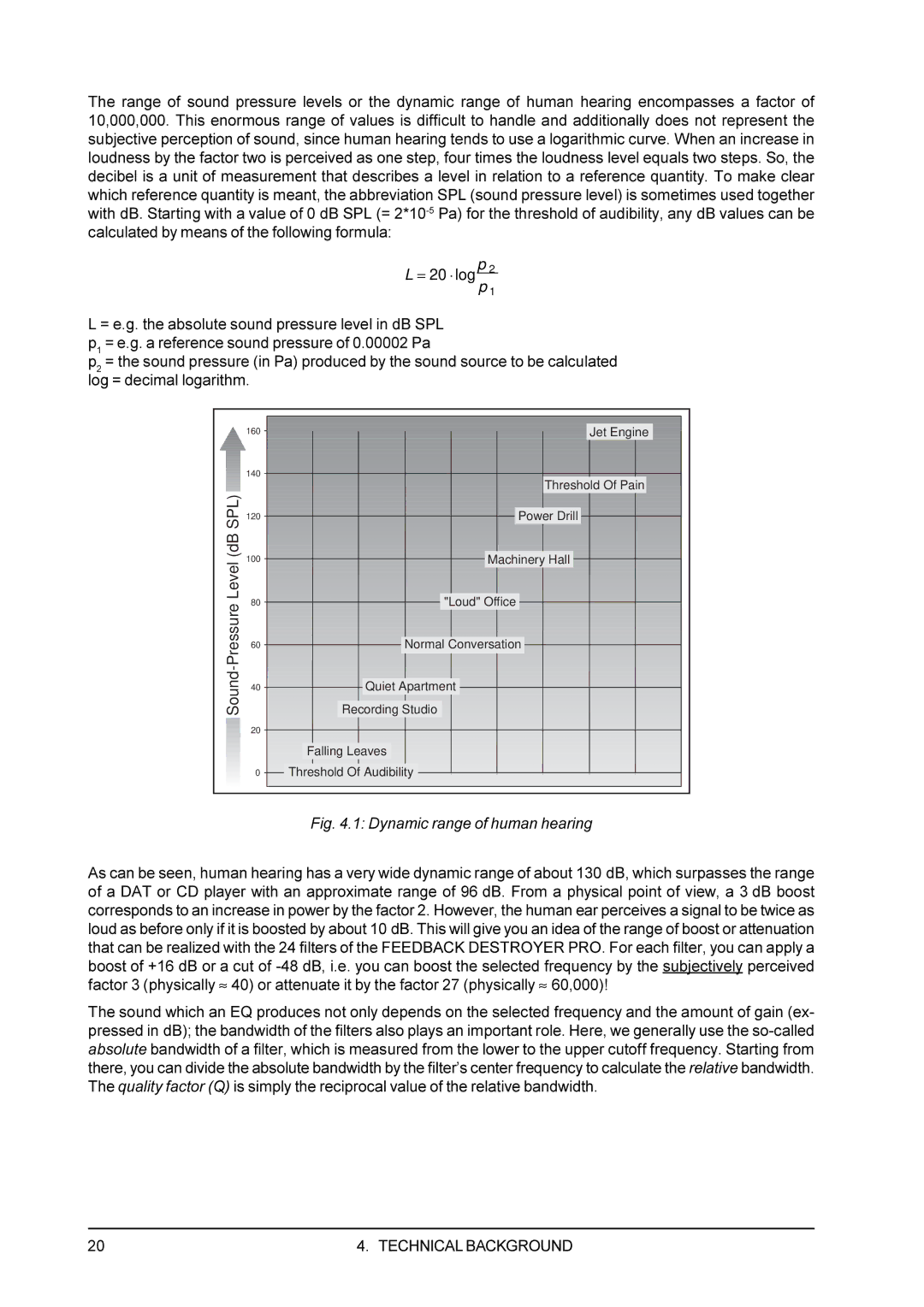
The range of sound pressure levels or the dynamic range of human hearing encompasses a factor of 10,000,000. This enormous range of values is difficult to handle and additionally does not represent the subjective perception of sound, since human hearing tends to use a logarithmic curve. When an increase in loudness by the factor two is perceived as one step, four times the loudness level equals two steps. So, the decibel is a unit of measurement that describes a level in relation to a reference quantity. To make clear which reference quantity is meant, the abbreviation SPL (sound pressure level) is sometimes used together with dB. Starting with a value of 0 dB SPL (=
L= 20 ⋅ log p 2 p 1
L = e.g. the absolute sound pressure level in dB SPL p1 = e.g. a reference sound pressure of 0.00002 Pa
p2 = the sound pressure (in Pa) produced by the sound source to be calculated log = decimal logarithm.
160 ![]() Jet Engine
Jet Engine ![]()
140
Threshold Of Pain ![]()
120 ![]() Power Drill
Power Drill ![]()
100 ![]() Machinery Hall
Machinery Hall ![]()
80 ![]() "Loud" Office
"Loud" Office ![]()
60 ![]() Normal Conversation
Normal Conversation ![]()
40 ![]() Quiet Apartment
Quiet Apartment
![]() Recording Studio
Recording Studio
20
![]() Falling Leaves
Falling Leaves
0 ![]() Threshold Of Audibility
Threshold Of Audibility
Fig. 4.1: Dynamic range of human hearing
As can be seen, human hearing has a very wide dynamic range of about 130 dB, which surpasses the range of a DAT or CD player with an approximate range of 96 dB. From a physical point of view, a 3 dB boost corresponds to an increase in power by the factor 2. However, the human ear perceives a signal to be twice as loud as before only if it is boosted by about 10 dB. This will give you an idea of the range of boost or attenuation that can be realized with the 24 filters of the FEEDBACK DESTROYER PRO. For each filter, you can apply a boost of +16 dB or a cut of
The sound which an EQ produces not only depends on the selected frequency and the amount of gain (ex- pressed in dB); the bandwidth of the filters also plays an important role. Here, we generally use the
20 | 4. TECHNICAL BACKGROUND |
